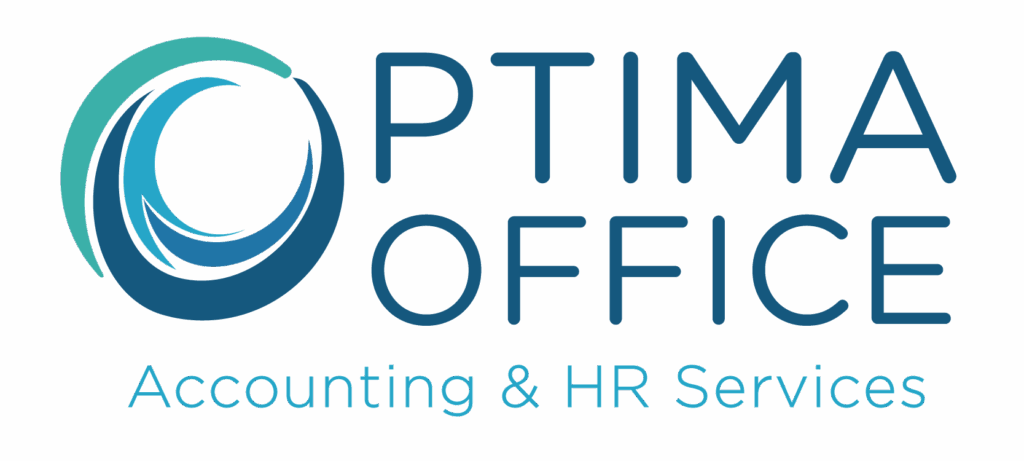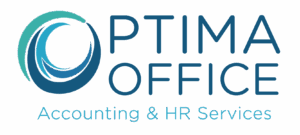Why Talent Acquisition Is Critical for Business Success
Talent acquisition is the strategic process of identifying, attracting, and hiring the right people for your organization’s current and future needs. Unlike recruiting, which fills immediate openings, talent acquisition is a proactive, long-term approach. It includes strategic workforce planning, building your employer brand, managing candidate relationships, using data for hiring decisions, and focusing on long-term retention.
The stakes are high: 77% of companies report talent shortages, a 17-year high. Organizations investing in strategic talent acquisition see a 50% increase in qualified candidates, 1-2x faster time to hire, and a 28% reduction in employee turnover. For small to mid-sized businesses, a solid talent strategy is the foundation for sustainable growth, turning challenges like losing a key controller or needing to scale quickly into opportunities.
What is Talent Acquisition vs. Recruitment?
If you’ve ever wondered why some companies seem to effortlessly attract top talent while others struggle, the answer often lies in understanding the difference between talent acquisition and recruitment. While the terms are often used interchangeably, they represent different philosophies.
Recruitment is a reactive trip to the store for an immediate need; talent acquisition is strategic meal planning for the long term. You’re thinking ahead, building relationships, and creating a sustainable system.
Here’s how they stack up:
| Feature | Talent Acquisition | Recruitment |
|---|---|---|
| Focus | Strategic, long-term human resources planning | Tactical, short-term vacancy filling |
| Approach | Proactive, continuous, relationship-building | Reactive, transactional, job-order driven |
| Goal | Building talent pipelines, employer branding, future needs, cultural fit | Filling specific, immediate job openings quickly |
| Scope | Workforce planning, succession planning, market intelligence, DEI, candidate experience | Sourcing, screening, interviewing, hiring for a role |
| Time Horizon | Years ahead, ongoing | Weeks or months for current openings |
| Roles | Often for specialized, hard-to-fill, or leadership positions | Typically for entry-level or high-volume roles |
The difference is strategic. When your controller gives notice or you need to scale your finance team, a talent acquisition mindset means you’re not starting from scratch.
The Strategic Difference: Long-Term Vision vs. Short-Term Needs
The power of talent acquisition is its forward-thinking approach. Instead of scrambling when a position opens, you’re already anticipating future needs and nurturing relationships with potential candidates who align with your company culture.
This is supported by Benjamin Schneider’s Attraction-Selection-Attrition (ASA) theory, which shows that people are drawn to organizations where they fit, companies select people who match their culture, and those who don’t fit eventually leave. Successful talent acquisition is about finding someone who will thrive in your environment for years to come—the difference between a short-term hire and a future leader.
Modern strategies use the “4 B’s” framework: Build your team through training, Buy external talent, Borrow contractors for projects, and Bridge employees into new roles. This approach keeps your business agile in a market where 77% of companies report talent shortages.
Core Responsibilities and Skills of a Modern TA Team
A modern talent acquisition professional is part detective, salesperson, data analyst, and culture ambassador. Their responsibilities are broad and have a direct bottom-line impact.
- Employer Branding: Communicating the company’s mission and values to attract the right people. A strong brand leads to a 50% increase in qualified candidates and 1-2x faster hiring.
- Workforce Planning: Working with leadership to analyze business goals, predict market trends, and forecast future team needs.
- Candidate Sourcing & Assessment: Proactively identifying and building relationships with talent, creating pipelines for hard-to-fill roles.
- Candidate Experience Management: Ensuring every applicant has a positive interaction with your company, turning them into brand ambassadors regardless of the outcome.
- Data and Analytics: Tracking metrics like time-to-fill and offer acceptance rates to optimize the recruitment process. Organizations that invest see a 40% difference in productivity.
- Diversity, Equity, and Inclusion (DEI): Implementing strategies to eliminate bias and build diverse teams, which leads to greater innovation and higher revenues.
Key skills for TA professionals include active listening, clear communication, tech aptitude, data literacy, networking, business acumen, sales skills, and resilience.
The 7 Stages of a High-Impact Talent Acquisition Process
A high-impact talent acquisition process is a strategic journey that connects your company’s needs with the perfect candidate. It unfolds in seven interconnected stages, creating a seamless experience that showcases your company culture.
The seven stages are needs analysis, sourcing, screening, interviewing, selection, offer negotiation, and onboarding. Each stage is tied to your larger business goals, not just filling an empty desk.
- Needs Analysis: Understanding the role’s technical skills, cultural fit, and how it drives business goals.
- Sourcing: Proactively finding talent across multiple channels, from job boards to professional networks.
- Screening: Narrowing the candidate pool through initial calls and skills assessments.
- Interviewing: Conducting deeper conversations to evaluate skills, problem-solving abilities, and environmental fit.
- Selection: Identifying the top candidate who is both qualified and aligned with the company’s future.
- Offer Negotiation: Structuring a competitive compensation package that creates a win-win.
- Onboarding: Integrating the new hire into the team to ensure they become a productive, engaged member.
From Planning and Sourcing to a Successful Onboarding
The front end of the process begins with a job requisition intake meeting to understand the role’s impact. We help craft job descriptions that clearly outline responsibilities while highlighting your company’s unique culture. Pro tip: 85% of job seekers are more likely to apply when salary ranges are included.
Our sourcing channels go beyond the “post and pray” method. We actively hunt for talent using LinkedIn Recruiter, employee referrals, and industry networking. Assessment methods like skills tests or personality evaluations provide deeper insights than a resume alone. AI-powered software can help measure soft skills and reduce unconscious bias.
Your offer acceptance rate reflects the strength of your Employee Value Proposition. Finally, employee retention starts with a smooth onboarding process. We follow this guide to effective employee onboarding to ensure new hires feel supported from day one.
The Importance of a Positive Candidate Experience
Every applicant’s experience shapes your brand perception. A positive journey creates brand advocates, while a negative one can cause damage. Candidate communication is the foundation—keeping people informed with clear timelines and honest feedback shows respect for their time.
Feedback loops are crucial for building long-term relationships. A candidate who isn’t selected today might be perfect for a future role or could refer someone else. Your brand perception is shaped by every interaction. When candidates feel valued, they speak positively about your organization.
Companies that invest in a strong employer brand see a 50% increase in qualified candidates. A smooth, respectful process also helps in reducing time-to-hire. In a market where 77% of companies report talent shortages, speed and respect can be your winning combination.
How to Build a Winning Talent Acquisition Strategy
A winning talent acquisition strategy is the blueprint for your company’s growth. For small to mid-sized businesses, a strategic approach to hiring levels the playing field against larger competitors.
The key is business alignment: every hiring decision must support your company’s goals. This requires talent forecasting to anticipate future needs, competitive analysis to understand what other companies are offering, and a compelling Employee Value Proposition (EVP) that answers the question: “Why should I work for you?”
Pillar 1: Developing a Powerful Employer Brand
Your employer brand is your reputation. A strong brand, which can reduce turnover by 28% on average, attracts candidates who genuinely align with your mission. It’s not about appealing to everyone; it’s about magnetizing the right people.
- Company Values: Your values must be evident in daily operations and decision-making, not just words on a wall.
- Employee Testimonials: Authentic stories from your current team carry more weight than any marketing copy. Encourage employees to share their experiences on platforms like LinkedIn or Glassdoor.
- Culture Marketing: Show, don’t just tell. Share real examples of your work-life balance, flexible policies, and professional development opportunities to make your culture tangible.
Pillar 2: Aligning with Business Goals and Workforce Planning
Effective talent acquisition is built hand-in-hand with your business strategy, looking beyond today’s open roles to your long-term workforce needs.
- Skills Gap Analysis: Identify the capabilities you have versus what you’ll need in the future. This guides both hiring and internal development efforts.
- Internal Mobility: Promoting from within through mentorship and training is often faster and more cost-effective than external hiring. It also shows your team there are real growth opportunities.
To attract external talent, 84% of employers believe benefits attract top talent. Today, this includes flexible work arrangements, professional development, clear career paths, and a supportive culture. Strategic workforce planning transforms hiring from a reactive scramble into a proactive advantage, building talent pipelines before you desperately need them.
The Future of Hiring: Tech, Data, and Key Trends
The landscape of talent acquisition is evolving at a breakneck pace. To stay competitive, organizations must accept innovation, leverage data, and adapt to emerging trends.
Leveraging Technology and Data in Talent Acquisition
Technology and data are fundamental to modern talent acquisition. The global talent acquisition software market is projected to grow 14.3% annually, and 99% of executives say their businesses have generated returns from digital investments.
- Applicant Tracking Systems (ATS): These systems streamline applications, candidate communication, and compliance.
- AI-Powered Sourcing & Screening: AI tools draft job descriptions, source candidates, and screen resumes, reducing bias and saving time. Chatbots can shorten the time to move candidates to the interview stage by nearly 80%.
- Data-Driven Decisions: Tracking metrics like time-to-fill and cost-per-hire allows for process optimization and ROI measurement. Organizations investing in talent analytics see a 40% difference in productivity, according to research on talent analytics productivity.
- Improved Assessments & Interviews: AI-powered tools like Harver and Hirevue help measure soft skills, assess cultural fit, and conduct video interviews with real-time evaluation.
Embracing these technologies allows teams to focus on building relationships and making strategic decisions.
Current Trends Shaping the Industry for 2025 and Beyond
Several key trends are shaping work and hiring:
- Gig Economy Integration: Strategies must adapt to include contract, freelance, and temporary workers for greater flexibility and access to specialized skills.
- Flexible Schedules & Remote Work: Offering flexibility is crucial, as it broadens the talent pool and is linked to 29% higher productivity and a 53% greater ability to focus.
- Skills-Based Hiring: Focusing on verifiable skills over traditional credentials like degrees helps reduce bias and opens doors to more diverse talent. Employers using this approach are 60% more likely to make a successful hire.
- Upskilling and Reskilling: With rapid technological change, identifying internal candidates for training is key to building a future-ready workforce.
- Inclusive Hiring Practices: A strong focus on Diversity, Equity, and Inclusion (DEI) is a business imperative. This involves using tools like Textio to eliminate bias in job descriptions and sourcing from underrepresented groups. Diverse teams are proven to generate higher revenues, and 55% of job seekers prioritize diversity.
Frequently Asked Questions about Talent Acquisition
Here are answers to the most common questions we hear from business owners about getting their hiring strategy right.
How do you measure the success of talent acquisition?
Success is measured by hiring the right people who contribute to business growth. We track several key metrics:
- Time-to-Fill/Hire: Measures efficiency from job approval to offer acceptance.
- Cost-per-Hire: Tracks the financial investment per hire.
- Quality of Hire: The most critical metric, measured by new hire performance, retention, and manager satisfaction.
- Offer Acceptance Rate: Indicates the attractiveness of your offers.
- Source of Hire Effectiveness: Shows which channels deliver the best candidates.
- Candidate Satisfaction: Measures the candidate experience, which impacts your employer brand.
Tracking these metrics together allows for continuous improvement and demonstrates the ROI of your talent strategy.
Is talent acquisition part of HR?
Yes, talent acquisition is a specialized, strategic function within Human Resources. While the broader HR function manages the entire employee lifecycle (onboarding, benefits, performance management, etc.), talent acquisition focuses on the front-end process of workforce planning, employer branding, and attracting and hiring new talent. A seamless partnership between TA and HR ensures a positive employee experience from the first contact onward.
What are the biggest challenges in talent acquisition today?
The hiring landscape is incredibly challenging. Understanding these pain points is the first step to overcoming them.
- Talent Shortages: A 17-year high, with 77% of companies struggling to find qualified candidates.
- Intense Competition: Companies compete on salary, culture, benefits, and flexibility to attract top talent who have multiple options.
- Employer Branding: Building and maintaining a positive reputation as an employer requires consistent effort.
- Diversity, Equity, and Inclusion (DEI): Actively working to eliminate unconscious bias from the hiring process is a continuous challenge.
- Evolving Candidate Expectations: Candidates now prioritize work-life balance, remote options, and professional development.
- Technology Integration: Effectively implementing AI and analytics tools remains a hurdle for many organizations.
- Economic Uncertainty: Balancing the need to scale with the risks of a fluctuating economy makes workforce planning difficult.
With the right strategy, these challenges can become competitive advantages.
Conclusion
Talent acquisition is no longer just hiring; it’s a critical strategic function for business growth. In a competitive landscape where 77% of companies report talent shortages, a proactive approach to building your workforce is essential for success. The difference between struggling to find people and consistently attracting top talent lies in a strategic approach that builds relationships, creates a desirable employer brand, and uses smart technology.
For many small and mid-sized businesses, building a comprehensive talent acquisition strategy is overwhelming. You know you need better hiring processes to find a skilled controller or satisfy board members, but you lack the time and resources. Traditional recruiting isn’t working.
That’s the challenge we solve at Optima Office. We provide the strategic thinking and execution of a full HR department without the cost of hiring full-time specialists. Our fractional approach gives you access to experienced talent acquisition professionals who understand your vision and can build your ideal team.
Our rapid team deployment provides support within 3-5 days, and our proprietary five-point system ensures we match you with professionals who fit your culture and industry. Whether you need to fill a critical role or build a talent pipeline, we bring the expertise to maximize your success and minimize the risks of bad hires.
Ready to stop struggling with talent acquisition and start building the team that will drive your business forward? Let us show you how the right HR foundation can transform your hiring outcomes.








